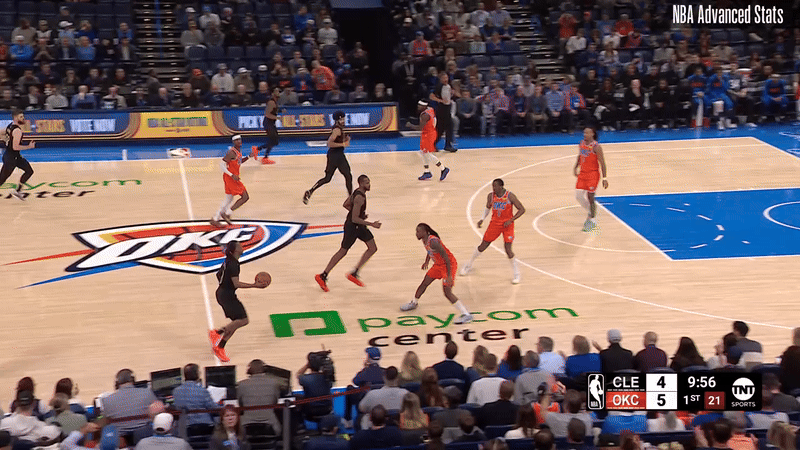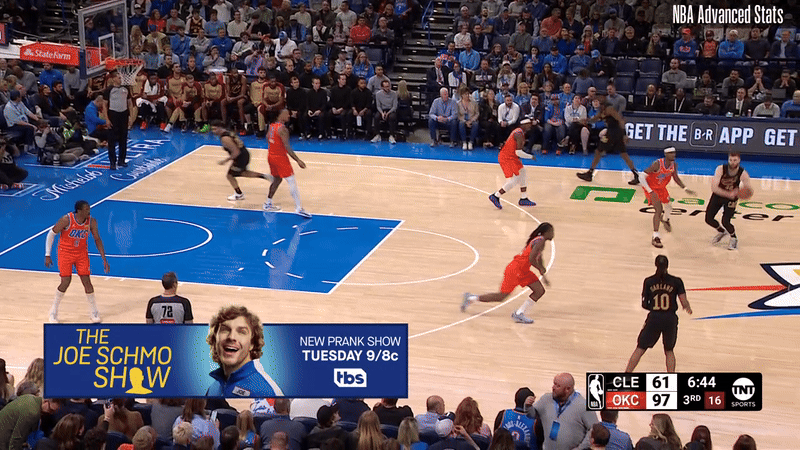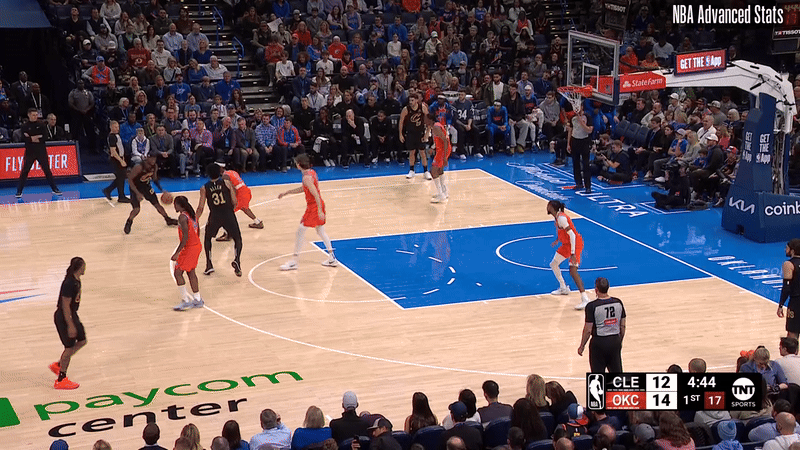After Thursday night’s shellacking of the Cleveland Cavaliers, the Oklahoma City Thunder are tied for the league’s best record and have the league’s best defense. Calling it the league’s best defense undersells just how good the Thunder have been on that side of the ball. At 103.7 points allowed per 100 possessions per Cleaning the Glass, the gap between the Thunder and second-ranked Orlando is the same as the gap between Orlando and tenth-ranked Miami.
Driving that defensive mark is Oklahoma City’s penchant for forcing turnovers and gumming up other team’s offense. The Thunder generate nearly 12 steals every game and three Thunder players - Shai Gilgeous-Alexander, Jalen Williams, and Cason Wallace - rank in the top ten league-wide for steals per game.
And it isn’t just about steals. Oklahoma City leads the league in most defensive hustle categories tracked by the NBA: deflections, loose balls recovered, charges drawn, et al. 19% of opponent possessions end in a turnover per Cleaning the Glass. Again, the gap between the Thunder and everyone else in the league is large. The Thunder have supercharged their own frenetic defense; at this point last season, that same number was a tick below 16% (also leading the league.)1
The deflections are especially notable. The Thunder switch, show help on drives, and are long and active. It all contributed to Cleveland turning the ball over 21 times on Thursday.
Arms closing passing windows and disrupting lanes result in players attempting more ambitious passes. At times, the giveaways are comical.
Earlier in the game, Dean Wade was stripped on a routine dribble handoff. Can you blame him for gambling there?
The Thunder have the perimeter personnel to stay in front of the ball, switch when needed, and generally bother drivers. However, watching the Thunder this season, it isn’t the case that they are especially stingy in limiting drives (and the data seem to bear this out.) What does jump out is how aggressively the Thunder show help on drivers. Ball handlers finding themselves in the lane are met by a maze of bodies and arms.
Poor Caris LeVert. Don’t miss Jalen Williams staying aware of his man relocating at the top of the arc and Cason Wallace preventing the escape pass to Darius Garland in the corner.
That commitment to showing help has meant that the Thunder are ranked third in the league in opponent FG% at the rim per CTG, despite Chet Holmgren missing most of the season and Isaiah Hartenstein also missing significant chunks of time. Oklahoma City has defended the rim by committee.
The cost of that help defense? OKC ranks near-bottom in the league in the percentage of opponent shots that come from beyond the arc. Collapse in on drivers, show help, and that opens up the arc. So with opponents raining threes, how has the Thunder defense stayed so robust?
The superficial answer is that opponents shoot a league-worst 32.6% on those threes. One might be tempted here to think that the Thunder have benefited from inordinately bad opponent shooting and once that luck runs out, there will be some defensive slippage. I’m not so sure. Opponents do seem to be shooting poorly on threes classified as “open” or “wide open”, so there might be some regression coming there. However, two things give me pause in chalking it all up to luck. For one, the Thunder contest a ton of three pointers; only the Chicago Bulls contest more threes per the aforementioned hustle stats. A lot of those three point shots may be rushed, taken under duress, or generally not great looks.
Taking the broader view though, we have seen this story before. It wasn’t that long ago that the Mike Budenholzer Bucks and the Brad Stevens Celtics were also allowing opponents to fire away from three and seemingly benefiting from shooting luck. Those were also defenses that registered strong defensive numbers on other outcomes. One hypothesis floated at the time was that those teams, particularly the Celtics, were giving up threes to bad shooters. Again, maybe. At the level of team-wide stats, there is a lot going on under the hood that we miss.
One promising hypothesis comes from a 2018 Nylon Calculus project that dug in on three-point defense. The piece is worth reading in its entirety, but I want to highlight one point from the analysis contained in there:
Which component predicts opponent 3-point percentage? The only one that performed well was 2-point percentage, as the others had weak effects and borderline statistical significance. I think this makes sense. If you defend inside the arc well, it’s easier to cover outside shots and you’re probably a good shot defense too.
That passes the sniff test for me. On the purportedly less fluky two-point shots, Oklahoma City is in the top-three league-wide in opponent accuracy per Cleaning the Glass. Even if there is some regression, Oklahoma City’s three-point defense may be more real than mirage.
Interestingly, a number of teams - Philadelphia, Orlando, Memphis to name three - are turning their opponents over at abnormally high rates this season. It could be something that washes out by season end. But that number may be worth monitoring as the league continues to evolve. Perhaps forcing turnovers may be increasing as a point of emphasis in a league where offenses continue to break records. Preventing offense may be a more viable strategy than limiting it.





